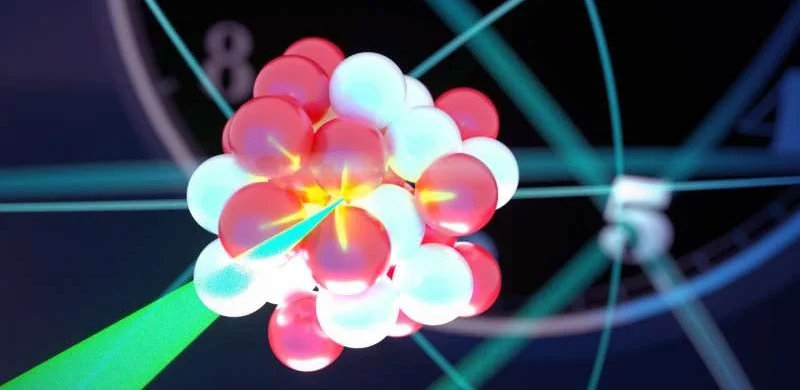An optical atomic clock with highly charged ions has been created
- November 19, 2022
- 0
Highly charged ions are a fairly common form of matter in space, for example, they are found in large quantities in the interiors of stars and in the
Highly charged ions are a fairly common form of matter in space, for example, they are found in large quantities in the interiors of stars and in the

Highly charged ions are a fairly common form of matter in space, for example, they are found in large quantities in the interiors of stars and in the belts of matter surrounding black holes. These ions get their name because they have lost all or most of their electrons, so they carry a strong positive electrical charge. This causes the remaining electrons, if any, to have a stronger bond with the nucleus than the electrons of neutral atoms or weakly charged ions.
Due to the strong interaction of electrons with the nucleus, highly charged ions are less susceptible to the influence of external electromagnetic fields. On the other hand, they acquire some unique properties that can be used as highly sensitive sensors for Special Relativity, quantum electrodynamics, and measuring the strengths of strong and weak nuclear interactions.
“We therefore expected that an optical atomic clock with highly charged ions would provide more accurate counting of time intervals, allowing us to test some fundamental theories,” the researchers write.
However, to use highly charged ions in an atomic clock, they must be cooled to extremely low temperatures. And there is a problem here, they can be obtained by creating super high temperature plasma. The scientists solved this problem by isolating a single highly charged argon ion from the plasma and placing it in an ion trap next to an ordinary beryllium ion.
The presence of the second ion makes it possible to use it to carry out the procedure of indirect cooling of a highly charged ion. Using a proprietary quantum algorithm, the highly charged ion was cooled to its near-elementary quantum mechanical state, corresponding to a temperature 200 million Kelvin above absolute zero.
Then the researchers took the next step, creating an optical grating with thirteen positively charged argon ions at nodes and connecting it to a device to read the oscillation frequency of those ions. They then compared the accuracy of the resulting atomic clock with the accuracy of an existing clock based on ytterbium ions and neutral strontium atoms.
The time measurement error of the new clock was 2*10^-17, which is quite comparable to the accuracy of existing optical atomic clocks. “But we plan to reduce this error with some technical improvements in the future, and if all goes well, we will have a next-generation optical atomic clock,” the researchers wrote.
“We now hypothesize that highly charged ions of certain chemical elements would be particularly sensitive to changes in the fine structure of space-time caused by the impact of dark matter particles,” the researchers wrote. And there could be an atomic clock with such ions. A perfect detector watch itself could become a detector of phenomena that go beyond the scope of the Standard Model and cannot be detected in any other way.”
Source: Port Altele
John Wilkes is a seasoned journalist and author at Div Bracket. He specializes in covering trending news across a wide range of topics, from politics to entertainment and everything in between.